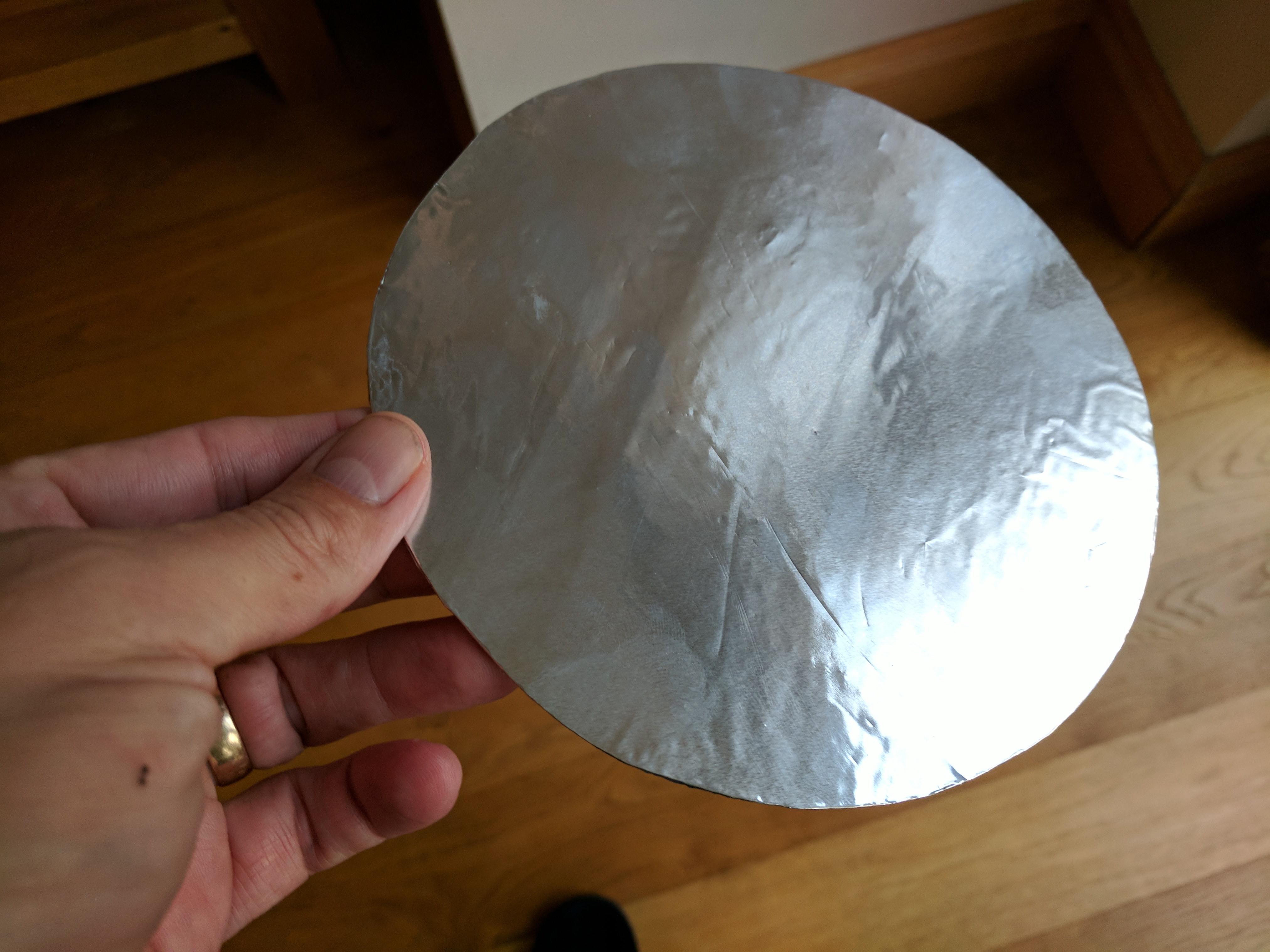Further improvements…
I made 2 ground planes earlier from 165mm diameter pieces of cardboard, and stuck aluminium foil to the uppermost surface (see image below).
I sat the emonTX on one (instead of the sheet of foil I tried yesterday), and also sat the Raspberry Pi base station on the other (no earth connection) and immediately saw yet further signal strength improvements, despite both units remaining in exactly same locations.
Measuring over a 2hr period, I now have;
| Mean | Min | Max | Diff | Dev | npoints |
|---|---|---|---|---|---|
| -66.1 | -72.0 | -54.0 | 18.0 | 3.0 | 720 |
Which seems a big difference from the -81.8db mean average, which I had 2 days earlier.
